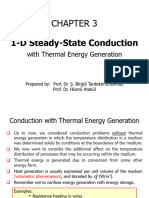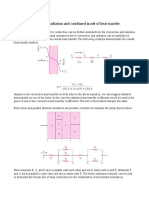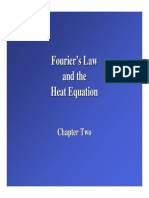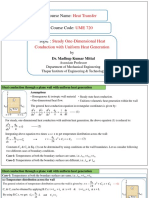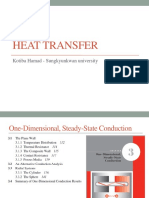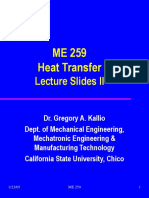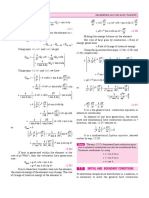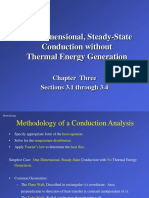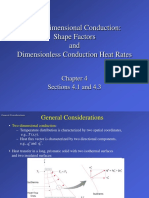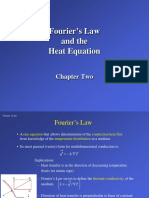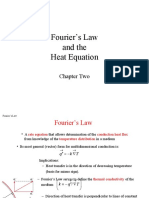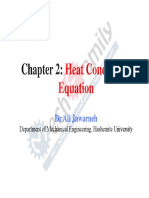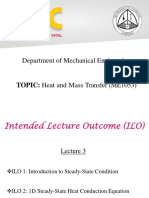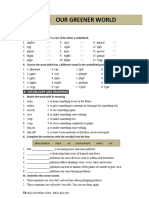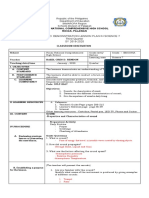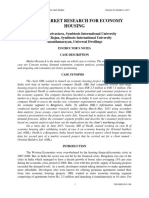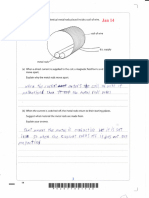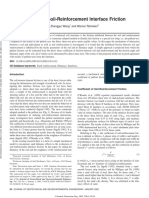0% found this document useful (0 votes)
55 views13 pagesSection 2c-1D Conduction Heat Generation
This document discusses 1D steady-state heat conduction with heat generation. It provides equations to model temperature distributions in plane walls and cylindrical systems when there is uniform internal heat generation. For a plane wall, the temperature distribution is a quadratic function containing the surface temperatures and heat generation rate. For cylinders, the distribution depends on the log of the radial coordinate and has a constant surface temperature when convection is at the outer surface. An example problem analyzes heat transfer in a nuclear fuel rod.
Uploaded by
Mustafa OCopyright
© © All Rights Reserved
We take content rights seriously. If you suspect this is your content, claim it here.
Available Formats
Download as PDF, TXT or read online on Scribd
0% found this document useful (0 votes)
55 views13 pagesSection 2c-1D Conduction Heat Generation
This document discusses 1D steady-state heat conduction with heat generation. It provides equations to model temperature distributions in plane walls and cylindrical systems when there is uniform internal heat generation. For a plane wall, the temperature distribution is a quadratic function containing the surface temperatures and heat generation rate. For cylinders, the distribution depends on the log of the radial coordinate and has a constant surface temperature when convection is at the outer surface. An example problem analyzes heat transfer in a nuclear fuel rod.
Uploaded by
Mustafa OCopyright
© © All Rights Reserved
We take content rights seriously. If you suspect this is your content, claim it here.
Available Formats
Download as PDF, TXT or read online on Scribd
/ 13
